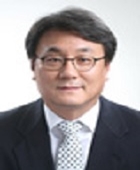
열전소자를 이용한 반도체 검사용 자동 온도제어 모듈 개발
초록
In semiconductor manufacturing processes, the final inspection is a crucial last test stage for screening defective parts before delivery to customers. Since traditional convection-based temperature control has limitations and requires time for a solution, this study focuses on the development and verification of an automatic temperature control technology using conduction-based thermoelectric modules. From the performance tests, it is found that the module operates in the temperature range of –40℃ to 120℃, and all channels achieve temperature transitions at each step within 6 min. The temperature module shows accuracy variations of –0.8℃ to 1.9℃ over the entire stage, which fulfills the semiconductor industry requirement of within ±2℃ for inspection equipment.
Keywords:
Thermoelectric module (TEM), Semiconductor test equipment, Auto temperature control module, Temperature range, Temperature change time, Temperature precisionAcknowledgments
이 논문은 2019년도 한국기술교육대학교 교수 교육연구진흥과제 지원에 의하여 연구되었습니다.
References
-
Lee, K. J., Jeong, K. S., Park, S. M., 2010, Improvement of the Uniformity of Temperature Distribution Inside Semiconductor Test Equipment Chamber, J. Korea Acad. Industr. Coop. Soc., 11:10 3626-3632,
[https://doi.org/10.5762/KAIS.2010.11.10.3626]

- Sweetland, M., Lienhard, J. H., 2001, Rapid IR Heating of Electronic Components in the Testing Cycle, Proceedings of 35th National Heat Transfer Conference, NHTC01-1413.
-
Cho, Y. T., 2020, Forced Heat Dissipation in 120 W Street LED Using Thermoelectric Modules, J. Korean Soc. Manuf. Technol. Eng., 29:4 281-287,
[https://doi.org/10.7735/ksmte.2020.29.4.281]

-
Han, J. H., Im, K. H., Cho, Y. T., 2019, Forced Heat Dissipation of 30 W COB LED with Use of Thermoelectric Modules, J. Korean Soc. Manuf. Technol. Eng., 28:4 218-223,
[https://doi.org/10.7735/ksmte.2019.28.4.218]

- Yoo, S. Y., Hong, C. P., Shim, W. S., 2004, A Study on the Performance of Thermoelectric Module and Thermoelectric Cooling System, Korean Journal of Air-Conditioning and Refrigeration Engineering, 16:1 62-69.
- Ro, S. T., Seo, J. S., 1990, Principle of Thermoelectric Refrigeration and System Design, The Magazine of the Society of Air-Conditioning and Refrigerating Engineers of Korea, 19:3 135-145.
- Kang, B. H., Chang, H. J., Kim, S. Y., Kim, S. H., 2002, Cooling Characteristic at Hot Side of the Thermoelectric Module for an Air Conditioner, Korean Journal of Air-Conditioning and Refrigeration Engineering, 14:3 214-220.
-
Rajsuman, R., 2006, Innovation in Test: Where Are We, Third IEEE International Workshop on Electronic Design, Test and Applications (DELTA'06), 6-294,
[https://doi.org/10.1109/DELTA.2006.59]

Ph.D. candidate in the School of Mechanical Engineering, Korea University of Technology and Education.His research interest is mechanical engineering.
E-mail: dsson@koreatech.ac.kr
Ph.D. candidate in the School of Mechanical Engineering, Korea University of Technology and Education.Her research interest is mechanical engineering, injection molding and precision measurement.
E-mail: sunny61@koreatech.ac.kr


